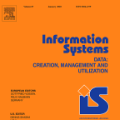Multi-camera vehicle tracking is one of the most complicated tasks in Computer Vision as it involves distinct tasks including Vehicle Detection, Tracking, and Re-identification. Despite the challenges, multi-camera vehicle tracking has immense potential in transportation applications including speed, volume, origin-destination (O-D), and routing data generation. Several recent works have addressed the multi-camera tracking problem. However, most of the effort has gone towards improving accuracy on high-quality benchmark datasets while disregarding lower camera resolutions, compression artifacts and the overwhelming amount of computational power and time needed to carry out this task on its edge and thus making it prohibitive for large-scale and real-time deployment. Therefore, in this work we shed light on practical issues that should be addressed for the design of a multi-camera tracking system to provide actionable and timely insights. Moreover, we propose a real-time city-scale multi-camera vehicle tracking system that compares favorably to computationally intensive alternatives and handles real-world, low-resolution CCTV instead of idealized and curated video streams. To show its effectiveness, in addition to integration into the Regional Integrated Transportation Information System (RITIS), we participated in the 2021 NVIDIA AI City multi-camera tracking challenge and our method is ranked among the top five performers on the public leaderboard.
翻译:尽管存在种种挑战,但多相机车辆跟踪在运输应用方面潜力巨大,包括速度、体积、原目的地数据(O-D)和路由数据生成。最近的一些工作解决了多相机跟踪问题。然而,大部分努力都致力于提高高质量基准数据集的准确性,同时无视较低的摄像分辨率、压缩艺术品、计算能力以及完成这一任务所需的大量计算能力和时间,包括车辆探测、跟踪和再识别。尽管存在各种挑战,但多相机车辆跟踪在运输应用方面潜力巨大,包括速度、体积、原地目的地数据(O-D)和路由数据生成。最近的一些工作解决了多相机跟踪系统的问题。此外,我们提议建立一个实时的多摄像头机动车跟踪系统,而不是偏重计算密集的替代品,处理现实世界、低分辨率的闭路电视,而不是理想化和整理的视频流。为了展示其有效性,除了融入区域综合运输信息系统之外,我们还在20-21年综合运输信息系统中实施了首级挑战,我们参与该系统。




